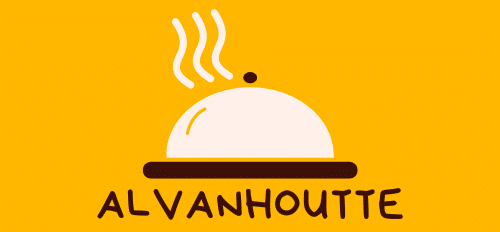Over the past few years, the restaurant industry has seen a massive shift in how its various operations are carried out. Among these changes, online reservation systems have proved to be a revolutionary development. In the age of digitalization, having an efficient table reservation system is a necessity for any restaurant, especially a small, high-demand bistro. There’s a need for a system that optimally manages the guests, reservations, and time. Through an effective restaurant reservation system, you can manage your restaurant’s bookings efficiently and ensure a seamless guest experience.
Understanding the Need for an Effective Reservation System
Before delving into the implementation process, you need to understand why your restaurant needs a reservation system. Having a clear picture of this will help you choose a system that aligns with your restaurant’s requirements, and hence, enhance your business.
Dans le meme genre : What are the best ways to incorporate organic beers into a pub's menu?
The restaurant reservation system is not merely an online table booking tool. It is a comprehensive solution that will help you manage your reservations, customer database, and even your staff. It will streamline your operations and free your staff from the cumbersome task of booking and managing reservations manually.
Further, with a restaurant reservation system, you can more efficiently manage your time and resources. You can use the data generated by the system to gain insights into customer preferences and peak hours. These insights will enable you to make informed decisions about staff deployment and menu planning.
A lire également : What temperature and humidity controls are necessary for a cheese aging room in a restaurant?
Choosing the Right Reservation System
Choosing the right reservation system is a critical step in this implementation process. The system you select should not only be easy to use, but it should also meet your specific business needs.
When choosing a system, consider its user interface and ease of use. A system with a complicated user interface can lead to mistakes and confusion. On the other hand, a system that is easy to use will reduce the chances of human error and improve staff efficiency.
Another important factor to consider is the system’s features. It should offer features like real-time availability status, integration with your website, customer database management, and reporting capabilities. These features will help you manage your reservations, gain insights into your customer behavior, and measure your performance.
Lastly, consider the system’s scalability. As your business grows, you will need a system that can handle the increase in reservations. Thus, the system you choose should be able to scale up as your business expands.
Implementing the Reservation System
Once you have chosen the system, the next step is to implement it in your restaurant. This involves setting up the system, training your staff, and integrating it with your existing operations.
Setting up the system includes installing the software, configuring the settings as per your requirements, and setting up your restaurant’s layout in the system. It’s essential to ensure that the system correctly represents your restaurant’s layout to prevent overbooking or double booking.
Training your staff is another crucial step in the implementation process. The system will only be as effective as the people using it. Therefore, your staff should be adequately trained on how to use the system. They should understand how to take reservations, manage the reservations, and handle any issues that may arise.
Integration with your existing operations involves linking the reservation system with your website and other digital platforms. This will enable your customers to make reservations directly from your website or social media profiles, enhancing their convenience.
Leveraging Your Reservation System for Business Growth
Implementing a reservation system is not just about streamlining your operations. It’s also about leveraging it to drive business growth.
You can use the data generated by the system to gain valuable insights into your business. The system can provide you with data on popular dining times, frequently booked tables, and customer preferences. You can use this data to optimize your operations, improve your service, and enhance your guests’ experience.
Moreover, a reservation system can help you build a database of your customers. This database can be a valuable resource for your marketing efforts. You can use it to send personalized offers to your customers, encourage repeat visits, and build customer loyalty.
However, remember not to overwhelm your customers with excessive marketing messages. The idea is to engage your customers, not irritate them.
Ensuring a Seamless Guest Experience
Implementing a reservation system should ultimately lead to a seamless guest experience. Your guests should be able to make a reservation easily, and they should be served efficiently when they visit your restaurant.
To ensure a seamless experience, make sure your system provides real-time availability status. This will help your guests know instantly whether a table is available or not. Also, the system should allow your guests to make a reservation with just a few clicks. A complicated reservation process can frustrate your guests and deter them from making a booking.
Moreover, use the system to reduce your guests’ waiting time. With the system, you can manage your reservations efficiently and prevent overbooking. This, in turn, will reduce your guests’ waiting time and enhance their dining experience.
Remember, a happy guest is a repeat guest. And repeat guests are key to your restaurant’s success. So, use your reservation system not just to manage your reservations, but also to create a memorable experience for your guests.
Streamlining Walk-ins and No-shows with the Reservation System
An effective reservation system not only handles booked tables but also efficiently manages walk-ins and no-shows. Walk-ins are potential customers who have not made a reservation but decide to dine at your restaurant. On the other hand, no-shows are customers who have made a reservation but fail to show up.
A well-implemented system should be able to handle the delicate balance of accommodating both walk-ins and fulfilling reservations simultaneously. It should provide real-time data on table availability, helping your staff to make quick decisions and offer immediate seating to walk-ins when possible.
Moreover, the system should have the functionality to monitor and mitigate the impact of no-shows. This could be done by implementing features such as automated reminders to customers about their upcoming reservation, enabling customers to cancel or amend their booking in real-time, and even integrating penalties for habitual no-shows.
To successfully manage walk-ins, your staff should be trained to update the system immediately when a table gets occupied or freed. This keeps the system up-to-date, enabling it to provide accurate real-time information about table availability.
As for no-shows, it’s crucial to have a clear policy in place. Communicate this policy to your customers when they are making a reservation. This ensures that they are aware of the potential penalties, thus reducing the likelihood of no-shows.
The Role of Reservation Software in Enhancing Dining Experience
The ultimate goal of implementing a reservation system is to elevate the dining experience of your customers. It’s not merely a tool for ensuring efficient table management but also a medium to provide your guests with a seamless and personalized experience.
With an efficient reservation system, your guests can book a table at their convenience, without having to call or physically visit your restaurant. This increases their satisfaction and likeliness to become a repeat customer. They can also see the real-time availability of tables, eliminating the uncertainty associated with walk-ins.
Additionally, reservation systems can store customer preferences, allowing you to personalize their experience. For example, if a customer always requests a specific table or has dietary restrictions, this information can be saved in the system. The next time they make a reservation, this information is at your fingertips, enabling you to meet their preferences without them having to repeat it.
Conclusion
In conclusion, implementing an effective reservation system is crucial for any high-demand bistro looking to streamline its operations and enhance the dining experience. It helps manage reservations, walk-ins, and no-shows, thus optimizing table turnover and increasing revenue.
Moreover, it provides valuable insights into customer behavior and preferences, enabling restaurant owners to make informed decisions and personalize the dining experience.
However, choosing the right system and implementing it correctly is key. It’s not just about purchasing a software but integrating it seamlessly into your existing operations, training your staff, and leveraging it for business growth.
In the age of digitalization, where customers are seeking convenience and personalized experiences, having a robust reservation system can give your small bistro the competitive edge it needs to thrive in the industry.










